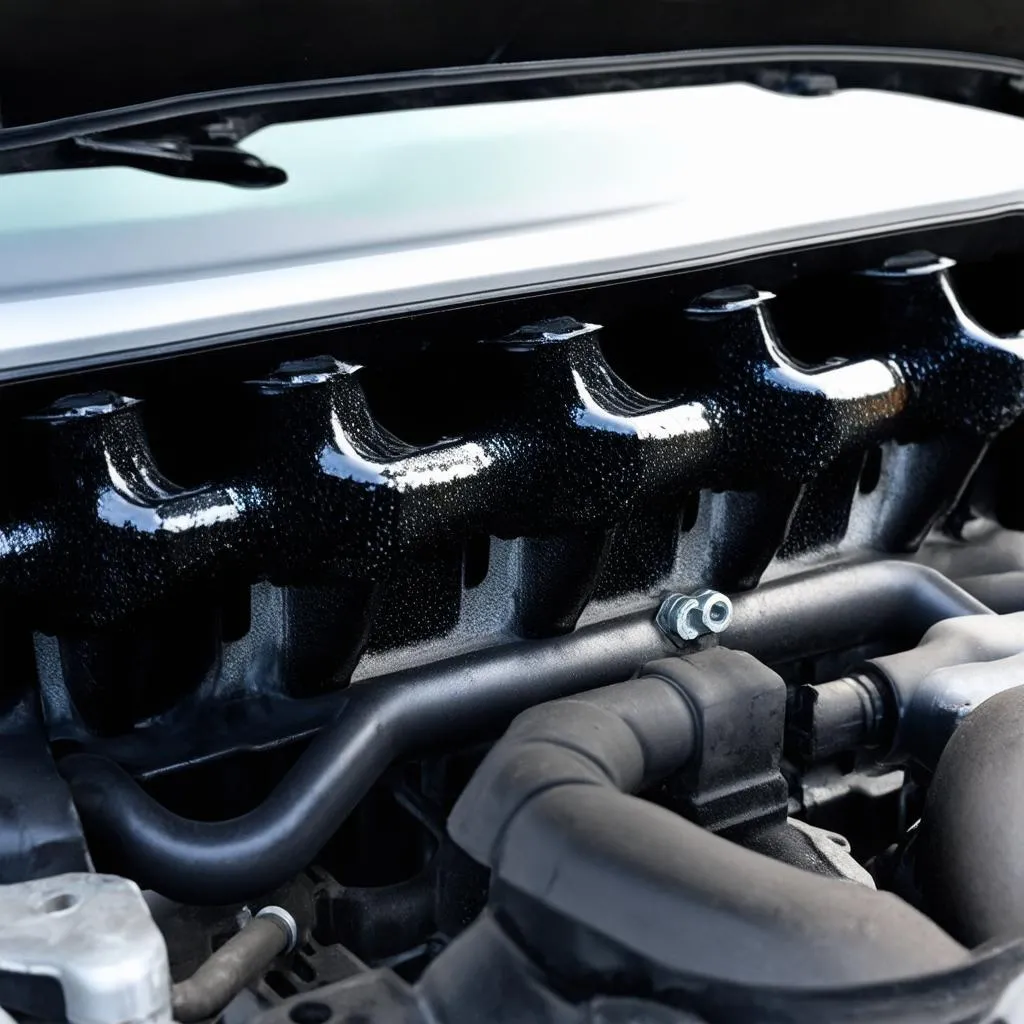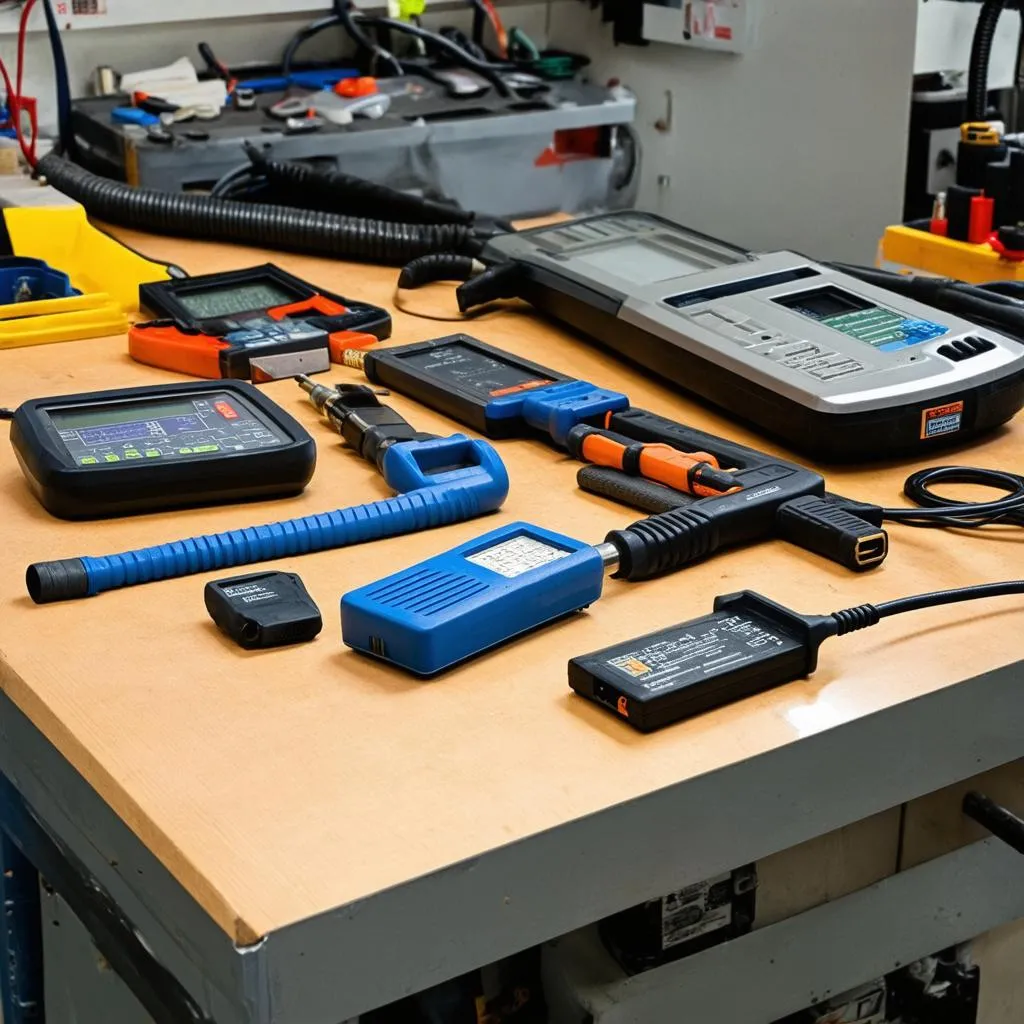Imagine this: you’re cruising down the Pacific Coast Highway, California, enjoying the ocean breeze in your sleek European car. Suddenly, your “Check Engine” light pops on, throwing a wrench into your blissful drive. You pull over, heart sinking, wondering what could be wrong. A quick check with your trusty OBD-II scanner reveals the cryptic code: P1512. What does it mean? Is it a minor glitch or a sign of a major engine problem? Don’t panic! We’re here to demystify OBD code P1512 and guide you through possible solutions.
What Does OBD Code P1512 Mean?
P1512 is an OBD-II code that often relates to the “Intake Manifold Runner Control (IMRC) System Stuck Open Bank 1.” Let’s break down this jargon:
- OBD-II: On-Board Diagnostics, your car’s internal communication system that alerts you to potential issues.
- Intake Manifold Runner Control (IMRC): A system designed to optimize engine performance and fuel efficiency by controlling the flow of air into the engine cylinders.
- Stuck Open Bank 1: “Bank 1” usually refers to the side of the engine with cylinder #1. “Stuck Open” indicates a malfunction where the IMRC system is not closing properly, potentially affecting your car’s performance.
In simpler terms, imagine your engine breathing through different-sized straws depending on its needs. P1512 suggests that one of these “straws” might be stuck open, making it difficult for your engine to “breathe” efficiently.
Why Should You Care About P1512?
Ignoring OBD code P1512 is like ignoring a nagging cough—it might seem insignificant at first, but it can lead to more severe problems down the road. Here’s why you shouldn’t ignore this code:
- Reduced Engine Performance: You might experience a decrease in acceleration power, especially at low RPMs.
- Poor Fuel Economy: A stuck IMRC can disrupt the air-fuel mixture, leading to reduced fuel efficiency and costing you more at the pump.
- Engine Damage (in severe cases): Prolonged driving with a faulty IMRC system could potentially lead to more serious engine problems in the long run.
Common Causes of OBD Code P1512
While the exact cause of P1512 can vary depending on the make and model of your car, here are some common culprits:
- Faulty IMRC Actuator: This actuator is responsible for opening and closing the IMRC valves. If it fails, the valves might get stuck.
- Vacuum Leaks: The IMRC system often relies on vacuum pressure to operate correctly. Leaks in the vacuum lines can disrupt this operation.
- Wiring Issues: Damaged or corroded wiring connected to the IMRC actuator or its sensors can lead to communication errors.
- Carbon Buildup: Excessive carbon buildup in the intake manifold or around the IMRC valves can hinder their movement.
How To Fix OBD Code P1512
Before you start tinkering under the hood, it’s always recommended to consult with a qualified mechanic, especially for complex systems like the IMRC. They have the expertise and tools to accurately diagnose and fix the problem.
However, if you’re a seasoned DIYer, here are some general steps to troubleshoot P1512:
- Inspect the IMRC Actuator: Check for any visible damage or loose connections. You can also test the actuator by applying vacuum or voltage to see if it responds correctly.
- Check for Vacuum Leaks: Inspect all vacuum lines connected to the IMRC system for cracks, loose connections, or signs of wear.
- Inspect Wiring and Connectors: Examine the wiring harness for any damage, fraying, or corrosion. Ensure all connectors are securely fastened.
- Clean the Intake Manifold: If you suspect carbon buildup, you might need to remove and clean the intake manifold.
 Intake Manifold
Intake Manifold
FAQs About OBD Code P1512
Can I still drive my car with the P1512 code?
While you might be able to drive for a short distance, it’s not recommended. Continued driving with a potentially faulty IMRC system could worsen the problem and lead to more costly repairs.
How much does it cost to fix P1512?
The repair cost can vary greatly depending on the specific issue, your car model, and labor costs in your area. A faulty IMRC actuator replacement could range from $200 to $500, while addressing vacuum leaks might cost less.
How can I prevent P1512 from happening again?
Regular engine maintenance, including cleaning the intake manifold and inspecting vacuum lines, can help prevent this code from recurring.
Still Puzzled? We’re Here to Help!
Diagnosing and fixing car problems can be daunting, but you don’t have to face them alone. If you need assistance installing diagnostic software or troubleshooting your car’s electronic systems, our team of expert mechanics is just a message away. Contact us via Whatsapp at +84767531508 for 24/7 support.
 Car Diagnostic Tools
Car Diagnostic Tools
Explore More Automotive Insights
- [Link to another relevant article on your website about OBD codes]
- [Link to a blog post about common car problems and solutions]
We’re dedicated to providing you with valuable information to keep your car running smoothly. Leave a comment below if you have any questions or share your experience with OBD code P1512. Let’s get your car back on the road!